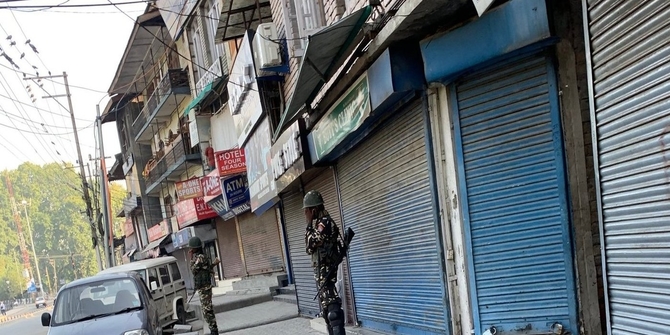A recent paper by Maitreesh Ghatak, Sandip Mitra, Dilip Mookherjee and Anusha Nath calls for well-informed and flexible ways of compensating displaced landowners to ensure fast growth along with an equitable distribution of its benefits in India.
Disputes over compensation of rural communities that are displaced for the purpose of industrialisation have become widespread in India as well as various countries in Asia and sub-Saharan Africa. One of the most prominent examples in India occurred in the second half of 2006, when the West Bengal government acquired 997 acres of prime agricultural land under the aegis of the 1894 Land Acquisition Act to enable Tata Motors to build a factory for Nano, its new model for a small and cheap car.
In order to woo Tata Motors away from other Indian states offering favourable tax concessions, the West Bengal government allowed Tata Motors to specify the location of its factory, and offered it a long lease on favourable terms. Tata Motors chose an area in Singur located on the Durgapur Expressway about 90 km from Kolkata. The West Bengal government subsequently decided to acquire the area required for the factory and offer compensation to those whose lands were being acquired as required by the 1894 Act. The local community of Singur was incensed by this action, generating resistance from households facing forced acquisition. This resistance soon snowballed into a protest movement, which the main opposition party, the Trinamool Congress (TMC) subsequently galvanised. As time went by and Tata Motors started building its factory, some of those who had originally agreed to the compensation changed their mind and joined the ranks of the protesters. The TMC demanded that the government return the lands of those who refused the compensation. Local outbreaks of violence occurred, and the protests acquired national and international media attention. Two years later, Tata Motors decided to withdraw from West Bengal, and took the Nano car factory to Gujarat.
While the events of Singur are well known, there is substantial disagreement regarding the underlying causes. Critics of the erstwhile Left Front government argue that the livelihoods of large numbers of poor cultivators and agricultural workers were imperilled by the land acquisition; the government did not pay adequate compensation for the lands acquired; under-compensation and adverse economic impact explains (and thus justifies) the refusal of many landowners to accept offered compensation. The opposite point of view is that the refusal to accept compensations by some landowners and the uprisings in the local community were politically motivated rather than justified by adverse economic impact or under-compensation.
In this context, this paper addresses the following questions: Whose lands were acquired: poor cultivators or wealthier landowners and non-cultivators? How much land was acquired: was it large relative to lands owned previously for the majority of affected landowners? Did the government offer compensation at the market value of lands acquired? Could the decisions of landowners to refuse the government’s offer be explained by under-compensation, and/or the extent to which their livelihoods were affected? What was the impact of the acquisition and compensation offered on incomes, consumption and assets of those whose lands were acquired, as well as tenants and workers that had previously been employed on acquired lands?
To answer these questions, detailed household surveys were conducted in 12 Singur villages: six where land had been acquired (including both households whose lands were and were not acquired), and six not subject to any land acquisition to use a standard of comparison to assess the impact on those whose lands were acquired.
The following are our main findings:
How much land was acquired, and from whom? The majority of plots acquired were non-negligible in size, compared to the average in Singur. Most of the land was acquired from marginal landowners, and from those engaged in cultivation on the acquired plots. For most affected owners, more than half the land they owned in 2005 was acquired.
Did the government offer compensations at the market value of the lands acquired? While this was true on average, a significant fraction of landowners were under-compensated owing to misclassification of their plots as sali (single-cropped low land that does not receive assured irrigation from state canals) rather than sona (multi-cropped land receiving assured irrigation) in the official land records, besides inability of the latter to incorporate other sources of plot heterogeneity.
What explains decisions of owners to accept the offered compensations? Owners with under-compensated types of plot were significantly more likely to reject the compensation offer. Those whose livelihoods were more tied up with cultivation and those with possible speculative motives (absentee landlords or those who purchased the plots rather than inheriting them) were more inclined to reject.
What was the impact of the acquisition on incomes and assets of those affected? Acquisition of land resulted in 40 per cent lower income growth for owners and half that for tenants. Consumer durables grew more slowly for undercompensated affected owners, compared to others in the same village. Agricultural workers that were directly affected experienced significant reductions in employment earnings compared with unaffected agricultural workers, who in turn, experienced smaller earnings growth compared with non-agricultural workers.
Hence, land acquisition in Singur imposed significant economic hardships on a large fraction of affected owners, tenants and workers. A large fraction of owners were undercompensated relative to market values. Tenants were undercompensated and agricultural workers were not compensated at all. While it is difficult for us to say how much local reactions were politically motivated, these economic hardships provide a plausible explanation for some of the observed refusals and protests.
An obvious implication for future land acquisition policy is the need to base compensation on better measures of land values than is permitted by official land records. Getting the soil grade right will reduce the incidence of under-compensation, chances of rejection and subsequent protest significantly. Displaced tenants and workers who constitute the poorer sections of these rural communities also need to be compensated in some way to avoid undesirable adverse impacts on their livelihoods, as well as to minimise any political fallout.
Another difficult issue concerns the principle of basing compensations on market values. Many owners value their land more than their market values on account of other attributes of land, such as financial security, complementarity with farming skills, locational factors, or considerations of identity or social prestige. That is why long-standing owners have not exercised the option to sell their land at market prices. To ensure that such owners are adequately compensated would require raising compensations above market values.
What makes this difficult to achieve in practice is that valuations of land have an inherently subjective nature varying from owner to owner. Current land acquisition bills in the Indian Parliament and state legislatures have pegged compensations at arbitrary ratios of market value. Getting these ratios right is critical. Setting the compensation too low risks providing inadequate compensation to large numbers of owners; setting them too high risks unduly lowering the pace of industrialisation and overall economic growth.
Even if market values are used, our results indicate a greater need to carry out surveys of the affected properties to evaluate their current characteristics, and use the results of such surveys to value the lands, instead of relying on official land records which are in poor shape in many parts of India. Creating a more well-informed and flexible way of compensating displaced landowners can go a long way in ensuring fast growth along with an equitable distribution of its benefits.
For more information on this topic – including details about the survey design, data collected, and detailed findings – see M. Ghatak, S. Mitra, D. Mokherjee, A. Nath, “Land Acquisition and Compensation: What really happened in Singur?” in Economic & Political Weekly, Vol. XLVIII No. 21, 25 May 2013.
About the Authors
Maitreesh Ghatak is Professor of Economics at the London School of Economics; Sandip Mitra is with the Indian Statistical Institute, Kolkata; Dilip Mookherjee is at Boston University; and Anusha Nath is a graduate student at Boston University.








